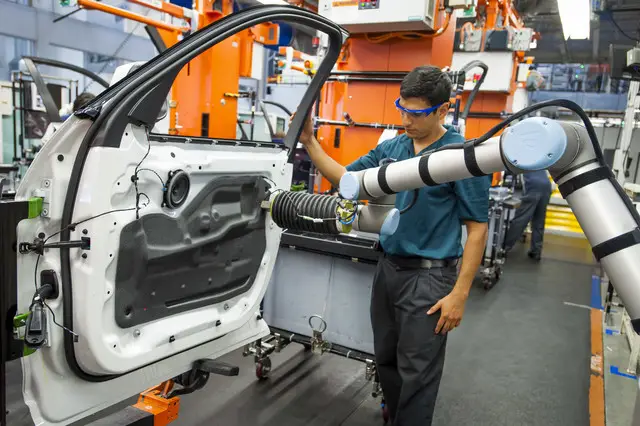Collaboration is the task of working together as a team to develop something. Collaborative robots are specially designed to work in collaboration with human employees. However, many people are yet to understand how they function.
Many individuals opine that collaborative robots are unfenced gadgets capable of working around human employees. While this creates a collaborative environment, it does not make the robots collaborative. It is important to understand that there are different types of collaborative robots.
Additionally, there is only one collaborative robot type which can be utilized with no extra safety features. The international robot standards state that there are various types of collaborative robot features as illustrated below.

Safety Monitored Stop
This collaborative feature is often utilized when a robot is working independently but humans are likely to invade its space. For instance, if specific operations need to be executed on a certain part while still in the robot’s space, operators can safely handle it within the robot’s workspace.
Collaborative robots are properly designed to stop operations if humans enter within a restricted space. The robot, however, will still be on but non-operational. These robot types are efficient and the fact that they can work collaboratively with humans saves lots of time that would otherwise be lost by stopping as a result of human interruptions.
Hand Guiding
This application comes in handy during path teaching or hand guiding operations. For example, this feature comes in handy when operators need to teach pick and place applications. While regular industrial robots are used in this collaboration, they come with an extra gadget that senses the force applied by the workers against the robot.
This additional gadget is referred to as a force-torque sensor and is specially designed for detecting force on the robot. Hand guiding is only applicable to the robot during the execution of specific functions. This means that the robot can operate in various modes safely.
Read also: What is Cognitive Automation, Its Benefits and Applications
Force and Power Limiting
The force and power limiting feature is present in collaborative robots which are the most human-friendly since they can collaborate with humans in the same workspace. These do not require additional safety features to function appropriately.
Cobots are specially designed to sense unusual forces along their path. It is well programmed to stop automatically once it detects a force overload and is specially designed to dissolve force in the event of an impact on broad surfaces.
This explains why the robots come in a round shape and have no exposed motors. Many of these robots are certified by different organizations which pay special attention to industrial safety for robot-human collaboration.
Separation and Speed Monitoring
This feature allows a vision system or lasers to monitor the robot. These track down the position of the human operators. The robot then operates within the pre-designed safety zones. When humans get close to the safety zone, the robot slows down and eventually stops when they get too close.
It is important to understand that there is a huge difference between separation and speed monitoring and a safety monitored stop. In the latter, the robot will stop when a human or object penetrates its safety limits. In this case, the robot will only resume operations after getting a signal from the operator.
In the former, the robot continues functioning depending on the predetermined speed limits designated for the safety zones. The safety zones are categorized to ensure that the robot reacts differently depending on the employee’s position.
Force Limited Features
These features allow robots to monitor force in their joints. This comes in handy to ensure detection of any unusual forces applied during operations. These types of robots are designed to either reverse positions or stop in a bid to counter human contact.
The force limited feature is similar to the hand guiding feature. However, as much as and guiding allows for human-robot collaboration, it does not make the gadgets naturally safe. This can be accomplished by the force limiting feature. A leading robot manufacturer universal-robots.com has various force limited robot models available in the market today such as the UR5, UR3, and UR10.
Force limited robots can be referred to as collaborative robots, it is important to understand that while industrial robots can execute collaborative applications, they vary from collaborative robots. In the future, many organizations will adopt collaborative robots in order to enhance efficiency in their operations.
[Image via: Google Images]



